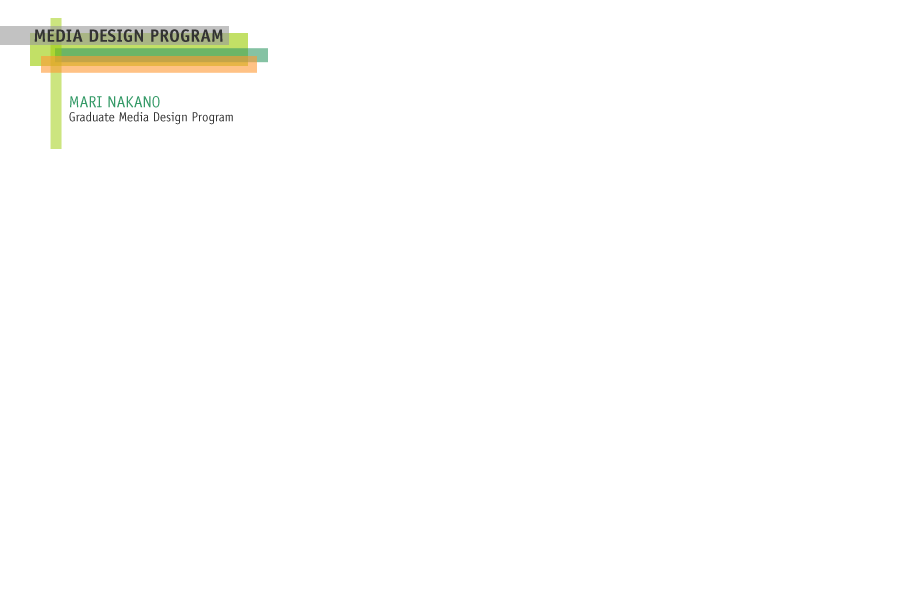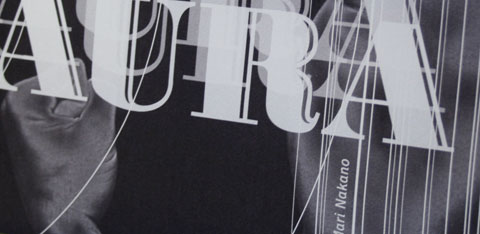FINAL PROJECT :: HISTORY & THEORY OF MEDIA
written: 12.12.07
title: "Muscular Aura"
by Mari Nakano
For my final project, I decided to create a response poster that would fold down to the same size as the Mediawork pamphlets. It's a two-color design (black with a hint of yellow), inspired by McLuhan and Fiore's The Medium is the Massage, and ifolds out to 15"x22". The Mediawork pamphlets are a method of transmediated design, using pocket-sized books in connection with the affordances of the web.
view PDF or read excerpts from the poster below

Muscular Aura
It is an epic-enter for other forms of media.
There exists a strength in books with which other forms of media cannot compete. Be it author notoriety, the writing style, the cover design, catchy chapter names, storylines, large bold pull quotes or the size, books tempt us to interact with them, captivating us in ways that other forms of technological media cannot. In them
exists an aura that connects us in ways digital interfaces have not yet proven to be capable of. Information can be disseminated in endless ways, but what makes a form of media stick to us is the form that comes equipped with an element that leaves us nostalgic about it, that makes us sense it’s value in our hands, that has a smell or a tangibility to it that is precious, that it is aging as we are, and that drives us to preserve them like jewels.


Although the real world and cyber world are just a click away, there is still a distance between them caused by the juxtapositions between the personal and
the impersonal, the permanent and the limitless. If a connecting website serves partly as a destination, then it should allow a space for reflection and summation of the journey to the site as well as through the site offerings. Perhaps a creative space should be constructed for the public to generate and contribute their own webtakes. In this way, others can engage in a manner where they not only comment creatively, but also will then be able to engage in their own practice of visual experimentation and cultural intervention. We need to also allow and encourage experimentation without having the idea of failure equate to being a
bad media designer.
The book is an artifact, or rather an art of facts and fictions that allow our imaginations to twirl around freely, and that empower our minds to think of the otherwise – the otherwise unconventional, the otherwise not so typical, the other wise ways of approaching the world and the things we create and interact with.
How can we push the idea of the book up the channel and tributaries of technological space? And in those channels and tributaries, how can we evolve the book into an informational tool that helps enhance a user’s experience in a wired and networked world bombarded by technotrash annoyances (i.e. pop-ups and spam)? What opportunities can we create that:
1) allow communities to critique our role and methods as information disseminators, and
2) open a space for one another to contribute to the evolution of a world that can be sustainable and preservable?
Breaking the idea of the conventional purpose and functionality of the book is a difficult process, but the book is an existing and historically popular form of media that can be used to open up other channels of information dissemination in technological space. The book is a medium that can serve as an arrow that can point us in a direction where we can transfer our quietly highlighted and column-scribbled reflections and critiques into an arena where we can exchange our knowledge openly, in real-time fashion. Together, we can build upon something that will afford a higher chance for actual change in our outlook on our futures as makers and consumers, as well as allow us the chance to collectively make empowered and progressive decisions.





